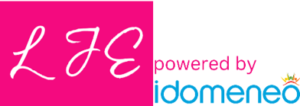401k Made Simple – Sort Of (pt. 2)

By VICKY BROWN
Last week we talked about the types of plans you might offer, and their benefits (or drawbacks). And by the way, I really do think it’s a good idea – if you haven’t already – to go back and take a look at last week’s episode. It really is a great foundation for what we’re going to talk about in this episode.
And as you might guess – I think this is a great time to remind you that this information is for general purposes only, I’m not an attorney or financial expert (and I don’t even play one on TV), so this is absolutely not to be considered tax or legal advice.
Alright – onward! So, let’s assume you’ve selected the type of plan you want – now it’s time to pull the trigger. First, you’ll need to choose a 401(k) plan provider. This is typically a financial institution or third-party administrator who will manage the plan for you (some of the most common are Fidelity, Principal, John Hancock etc.). They’ll handle things like plan administration, investment management, and record-keeping.
When you choose a provider, consider things like their fees, investment options, and most importantly – the level of support they offer. Next, you’ll need to design your plan. This is where you’ll make some important decisions:
- Will you offer traditional 401(k), Roth 401(k), or both?
- Will you offer an employer match? If so, how much?
- What will your vesting schedule look like?
- Will you allow employees to take loans from their 401(k)?
- What will the eligibility criteria be?
These are all important questions to consider, and your answers will shape your plan. Once you’ve made these decisions, you’ll then work with your provider to create a formal plan document. The Plan Document is a legal requirement under the Employee Retirement Income Security Act (ERISA). It’s basically the rulebook for your 401(k) plan.
You’ll also need to set up a trust to hold the plan assets. This is crucial because it protects your employees’ funds and ensures the money is used solely for their benefit. Again, many times your plan provider can take care of this piece for you.
Next, you’ll need to develop a recordkeeping system. And guess what – your plan provider will also typically help with this. But it’s important to understand that you’ll need to track contributions, earnings, and withdrawals accurately.
And finally, you’ll need to provide plan information to your employees. This includes distributing a Summary Plan Description, which explains how the plan works and what rights employees have under it. Now, I know that sounds like a lot. But remember, your plan provider will guide you through much of this process. Your job is to make informed decisions that best serve your business and your employees.
Okay, so you’ve set up your 401(k) plan. Congratulations! But your work isn’t done yet. As an employer offering a 401(k), you have ongoing responsibilities. First and foremost, you have a fiduciary responsibility. This is a fancy way of saying you’re legally required to act in the best interest of your plan participants – your employees. This includes carefully selecting and monitoring the investment options that are offered in your plan.
“… As an employer offering a 401(k), you have ongoing responsibilities. First and foremost, you have a fiduciary responsibility. This is a fancy way of saying you’re legally required to act in the best interest of your plan participants – your employees.”
You’ll also need to ensure your plan stays compliant with various regulations. This includes conducting annual nondiscrimination tests to make sure your plan doesn’t unfairly favor highly compensated employees. Now as we mentioned in last week’s episode, if you chose a Safe Harbor 401(k), you might be able to skip these tests, but you’ll need to make sure you’re meeting the Safe Harbor requirements.
Another important compliance task is filing Form 5500 with the Department of Labor and IRS each year. This form provides important financial information about your plan. And you’ll also need to handle the day-to-day administration of the plan. This includes making sure employee contributions are deducted from paychecks and deposited into the plan in a timely manner. And double check, because your payroll system should integrate with your 401(k) plan to make the funding process smoother.
Now, let’s talk a little about employer contributions. Many employers choose to offer a match – for example, matching 50% of employee contributions up to 6% of their salary. Now it’s not required, but it can be a powerful tool for attracting and retaining talent. You might also consider making profit-sharing contributions based on company performance.
A bit different than regular matching contributions, profit sharing contributions are typically made annually and are based on the company’s profitability. The beauty of profit sharing is its flexibility – you can decide each year whether to make a contribution and how much, based on your company’s performance. This allows you to reward employees in good years without committing to contributions when times are lean.
Whether you’re an entrepreneur jumping into a leadership role, a seasoned business pro with new HR responsibilities, or just starting your HR career – we’ve got the right path to guide you through your HR hurdles.
Check out the Leaders Journey Experience. This online education platform holds the LJE Masterclass, HR SimpleStart Academy and HR FuturePro Academy.
Not sure where to start – take the quiz!
When you implement a profit sharing component in your 401(k), you have several options for how to allocate the contributions. You could use a flat percentage of each employee’s salary, which is simple and equitable. Or, you might use a formula that favors longer-tenured employees or higher-paid employees (within IRS limits, of course). But, whatever method you choose, profit sharing can be a great way to boost retirement savings for your team while giving them a stake in the company’s success. Just remember, like all aspects of 401(k) plans, profit sharing comes with its own set of rules and regulations, so it’s always a good idea to work with a qualified advisor to set it up correctly.
Now, if you do make employer contributions, you’ll need to decide on a vesting schedule. A vesting schedule determines how long employees need to work for your company before they fully “own” the contributions you’ve made to their account.
There’s a lot here – and that brings me to another important responsibility you have – employee education. While you can’t give specific financial advice, you should provide educational resources to help your employees make informed decisions about their investments. Regular updates about the plan and its performance are also important. Your financial advisor or broker can be a huge help on this piece – so have a talk with them and see what they might be able to offer. Maybe a lunch and learn?
And finally, you’ll need to monitor the investment options offered in your plan. This doesn’t mean micromanaging every investment, but you should periodically review the options to make sure they’re performing reasonably well and have appropriate fees.
Now, I know this might sound overwhelming, but remember – you don’t have to do it all alone. Your 401(k) provider will handle much of the heavy lifting, and your financial advisor will act as your guide. Your job is to make informed decisions, stay on top of your responsibilities, and ensure your plan is serving your employees well.
Sure, offering a 401(k) is a big step, but it can be a game-changer for your business. It shows your employees that you’re invested in their future, which can boost morale, improve retention, and help you attract top talent.
